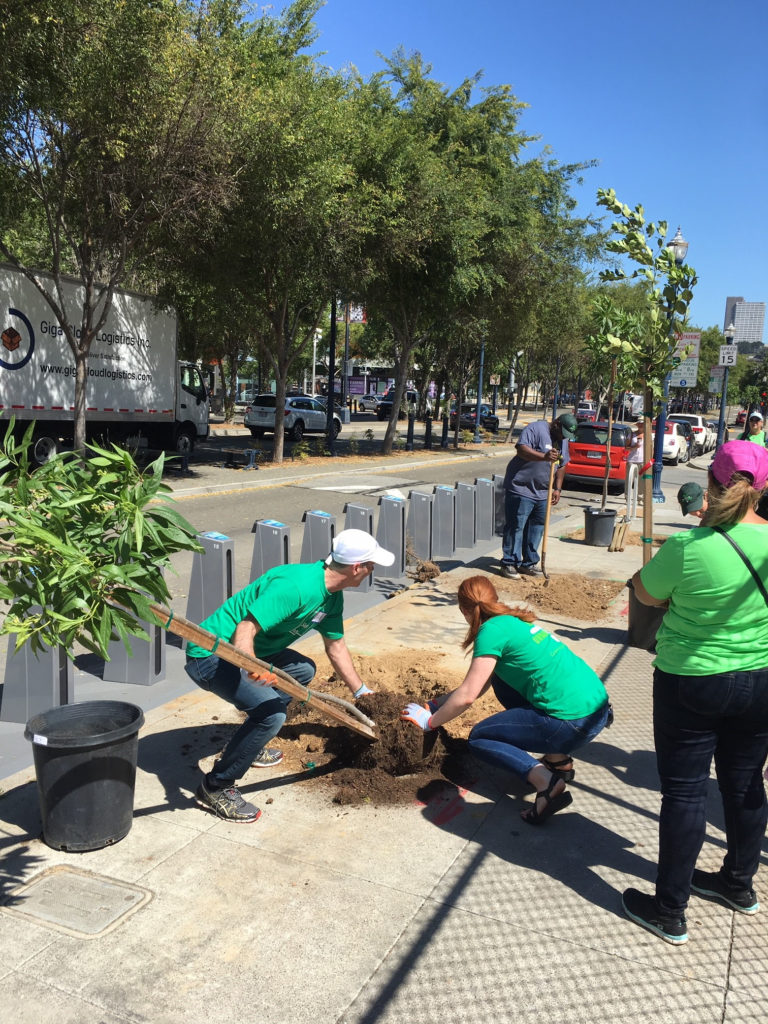In an effort to support local businesses as they reopen, some tree work was accelerated in recent weeks. Urban Forestry apologizes for the lack of communication around this. The timing of the work was unexpected, but needed to be completed to support those requesting outdoor seating permits to reopen retail and dining opportunities along Hayes and Octavia streets. Completion of this tree work ensures that businesses can reopen without interruption.
You can read their recent letter regarding recent tree trimming that has begun in Hayes Valley here.
Hayes Valley Tree Maintenance Q&A
I understand tree pruning, but what does tree removal work include?
Removing trees involves a series of steps including stump removal, sidewalk repair (where necessary), shifting replacement tree locations or modify basins (where necessary) and planting new trees. The various trades involved in the removal and replacement of a tree requires more time and labor than simply pruning a tree.
What is the timeline for replacing the trees removed?
Trees will be removed and replaced within three months of initiating the removal of a tree at individual sites. During these three months the work detailed in the previous answer will be conducted. Again, the time and labor needed for the work involved in removing a tree requires a longer schedule when compared to pruning a tree.
How many trees will be removed?
27 total trees will be removed. 26 are ficus and one is a poplar.
Will all the trees removed be replaced with a new tree?
Yes. There are four sites that are not replantable in their immediate location, due to utility and spacing conflicts. However, alternate planting sites have been identified nearby to replace these four sites.
What tree species will replace the ficus trees?
With the help of passionate and dedicated Hayes Valley residents, the Hayes Valley Neighborhood Association approved the palette of replacement tree species in April 2019. Sidewalk width, wind and sun exposure and deciduous or evergreen, were among the many factors taken into consideration while reviewing replacement species choices.
The approved palette of replacement species includes species such as Island Oak, London plane, Sweet bay, Ginkgo, Trident maple and Pink Dawn Chitalpa.
Do the tree removals really need to happen?
Please know that San Francisco Urban Forestry always looks for all alternatives before choosing tree removal. With the responsibility of care for street trees comes the responsibility for the safety of residents and visitors. If a dying or structurally unsound tree threatens that safety, it is time to remove it. The removal of ficus and other tree species that are currently posing a risk ensures that we prioritize public safety, and their replacement ensures that we grow a healthy and robust urban forest that thrives.
For more information about ficus trees, visit http://sfpublicworks.org/ficustrees.
For more information or to learn about the history behind the Hayes Valley ficus tree postings, walk throughs, hearings and hearing decisions, contact San Francisco Public Works Urban Forestry at urbanforestry@sfdpw.org.

